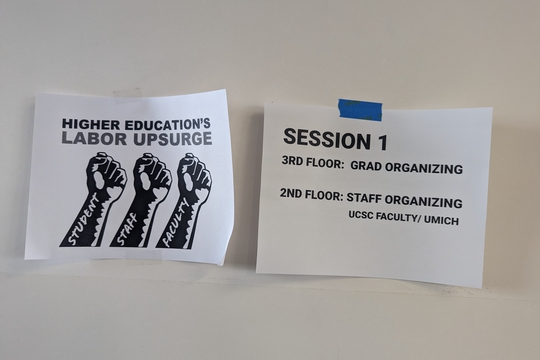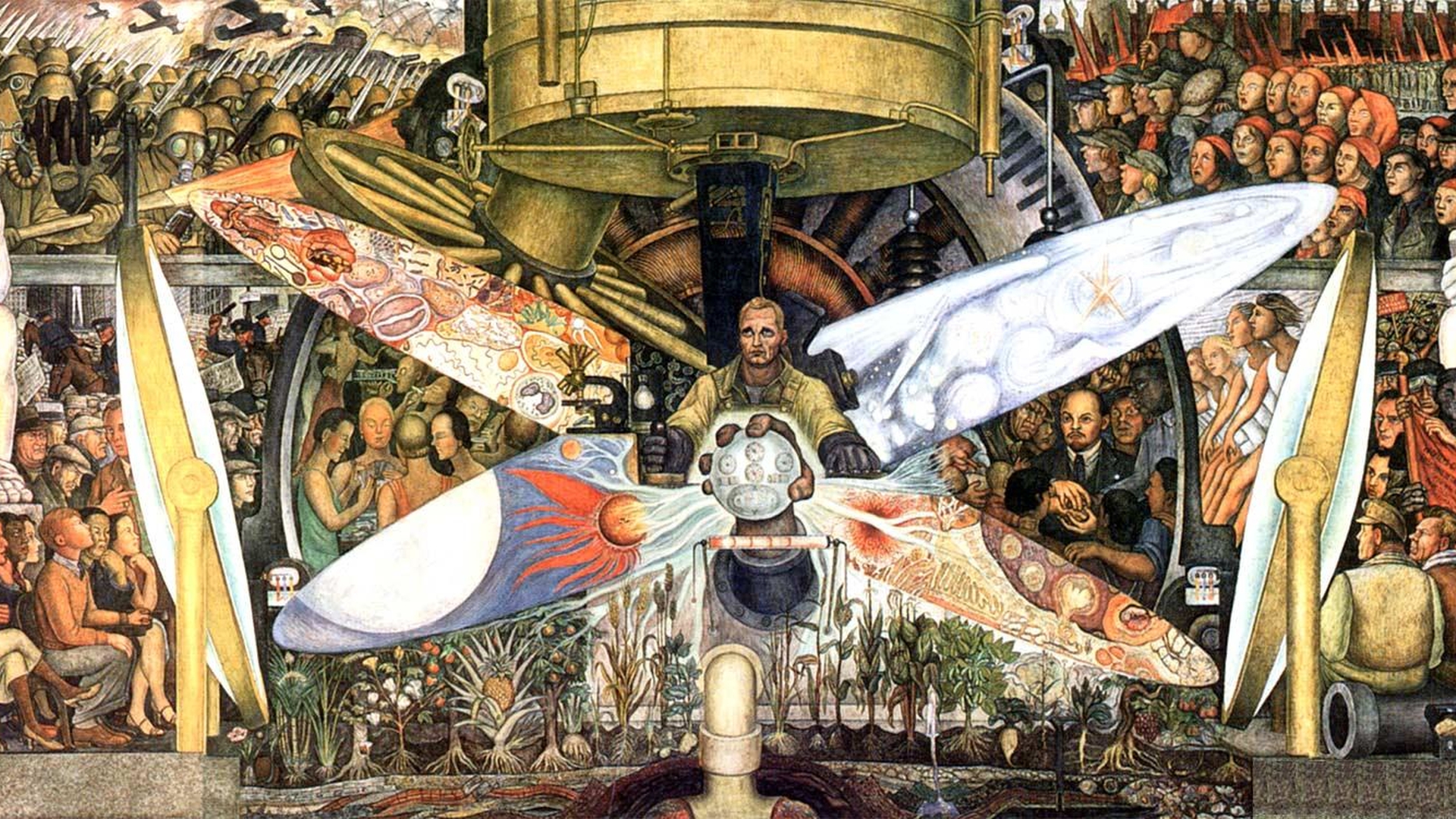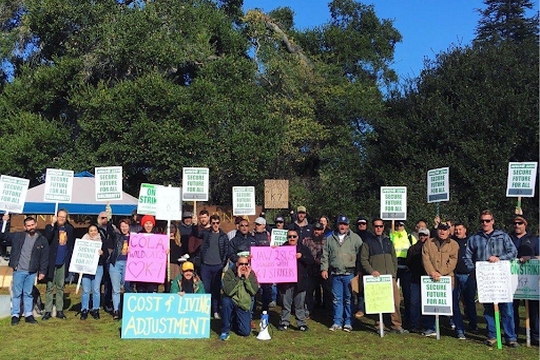New Strategies, New Orthodoxies
by
James Eastwood
August 1, 2023
Featured in Correspondences from the Upsurge (Book)
A Report From the ‘Higher Education’s Labour Upsurge’ Conference in Santa Cruz

inquiry
New Strategies, New Orthodoxies
by
James Eastwood
/
Aug. 1, 2023
in
Correspondences from the Upsurge
(Book)
A Report From the ‘Higher Education’s Labour Upsurge’ Conference in Santa Cruz
The academic year 2022-23 will be remembered as a period of unprecedented labour militancy in Higher Education on both sides of the Atlantic. It is still too early to tell what the outcomes or longer term consequences of this upsurge in activity will be, especially in the UK where UCU’s ongoing marking boycott remains unresolved.
Nonetheless, the conference Higher Education’s Labour Upsurge, organised at the University of California Santa Cruz this May, offered a rare opportunity for cross-state and cross-national comparisons in the midst of this crucial moment. There are many important differences between the US and UK contexts, but there are also many notable convergences. Time and again participants at the conference coming from very different academic, legal, and industrial relations systems were surprised at the resonances and the shared lessons to be drawn. In this brief article, I try to summarise some of the most salient.
The main shared development is a growing awareness and embrace of the necessity of open-ended forms of industrial action. The time-limited strike has been extensively pursued over a number of years in both contexts and has yielded some advances, especially when pursued in an escalating pattern. But its limitations are also becoming evident. Determined employers are meeting this tactic with renewed resilience and are seeking to wait out strike strategies premised on a fixed end-date. The responses by organisers in both the US and the UK has been to explore indefinite, “long-haul” forms of industrial action which rely on the accumulation of disruption over time.
In the UC system, a weeks-long indefinite strike by grad students unleashed an unprecedented level of rank-and-file engagement and won important gains in contract negotiations, even if its outcome and lessons remain contested. Meanwhile, open-ended strikes at universities such as Rutgers, Michigan, and Temple this year have targeted the spring and summer grading windows. Activists and employers elsewhere are watching these developments very closely. At the same time in the UK, a lengthy and largely healthy debate took place inside UCU over whether to pursue indefinite strike action. Even though this option was not eventually selected, it received unprecedented levels of support. The open-ended strategy has since re-emerged in the form of the marking and assessment boycott which has now been ongoing for over 3 months.
There are no magic bullets or shortcuts in industrial action. Disputes are not won solely through clever strategies or theories of change, but the hard practical work of organising at a granular level. Yet that hard work also yields insights, and the necessity of organising and preparing for the long-haul is undoubtedly one of the most important to emerge in recent years. It is now clear that, whatever pitfalls and risks may remain ahead, it will be difficult for employers – or union officials – to put the genie of indefinite action back in the bottle.
The hard-won insights which have given rise to the embrace of indefinite action on both sides of the Atlantic have come up against countervailing tendencies in the form of the new orthodoxies of labour organising increasingly adopted by union officialdom. The source materials for these new orthodoxies are in particular the writings of Jane McAlevey and the highly successful training courses she has led and popularised. This work has undoubtedly provided important lessons and energy to the trade union movement across the world. While not all of its methods and conclusions are universally shared, they are performing valuable work in revitalising our organising and should be celebrated. The more particular issue confronting the participants at the conference was the way that this approach has become embedded, ossified, and professionalised in the rhetoric and strategy of officials in higher education unions. Alternative approaches based on collective forms of planning and deliberation among workers, along with an openness to long-haul strikes, are by contrast stigmatised as minoritarian misadventures which lack professionalism.
Davies and Mason aptly describe this new orthodoxy as an “aggregative” approach to labour organising. It emphasises the importance of demonstrating high turnouts and participation rates – often displayed through symbolic and online means and frequently posed as an alternative to actually having to use collective power to apply pressure. In this understanding, the threat of industrial action at the moment of “peak power” can achieve more than its actual deployment. These arguments were not only deployed during the UC strikes. They are also widely disseminated in UCU strategy documents and internal meetings with lay officials. It does not take a strategic genius, or indeed a hostile employer, to notice the problem with these paradoxical claims. A threat of action will not work if you are transparent with members about your intention not to follow through with it. When such an approach predictably does not win results and industrial action is necessary, officials in both the US and UK have sought to engineer new moments of “peak power” in the midst of disputes whose strength actually depends on industrial leverage. Echoing the approach of union leaders who called for “escalating like hell” to precipitate a hasty exit from the UC dispute, as recently as the last few weeks the leadership of UCU in the UK attempted to win a final breakthrough in negotiations by calling a “day of protest” at short notice.
The means of achieving the displays of strength at the heart of the aggregative approach is the hallowed 1-1 conversation, in which the ordinary union member is energised into participating through contact with a trained organiser. Particularly following Covid, what were intended by McAlevey to be in-depth two-way conversations and information gathering exercises, have in the hands of officials increasingly transformed into mass texting campaigns, mail-merging, and invitations to join social media “storms” or publicity stunts. It is not a coincidence that participants at the conference from both sides of the Atlantic noted that these methods were at the heart of the organising models of both the Corbyn and Sanders movements, in which the primary goal was to win elections by persuading individuals to cast votes. Many of the officials who had previously pursued these approaches to driving turnout and engagement in those movements carried them with them when they left organisations such as Momentum or the Democratic Socialists of America and sought refuge in roles in resurgent trade unions, including in Higher Education.
It seems likely that, whatever post-game analysis takes place in the wake of the upswing in labour activism of 2022-23, one of the crucial debates will be whether the gains and losses should be attributed to these new orthodoxies or to the insurgent thinking which sought to challenge and transcend them.
Another crucial shared insight which emerged from the conference is the necessity of building durable and continually open forms of democratic organisation and rank-and-file participation and control in disputes. As Davies and Mason report, the resilience of the strike wave at UCSC when compared with the fragmentation and resignation encountered elsewhere was based on the structures of collective engagement which had been built there. This shows clearly that the embrace of the long-haul strike will not be enough if it is not accompanied by such democratic forms of organisation. In order for high-risk and uncertain actions such as the indefinite strike or a marking boycott to succeed, it is essential for the workers involved to be able to receive constant and accurate information about the strength of the strike around them and to deliberate collectively about whether to continue. Otherwise, such actions will become vulnerable to feelings of individual isolation and lack of control, employer demoralisation, and ambush by compromises advocated by union officials. This has been one of the major sources of uncertainty and frustration for participants in the UCU marking boycott.
The example of UCSC offers many salutary lessons for building such democratic structures at a local level, but the experience of the UC strikes in 2022 and also of the ongoing UCU marking boycott in the UK shows that implementing these in a state-wide or national bargaining environment is incredibly hard. It is one thing to generate such cultures of organising among colleagues with an experience of working alongside each other, and quite another to spread them across multiple institutions, each with their own workplace rhythms, financial pressures, management counter-offensives, and membership densities. Any such forums will likely be subject to the drawbacks of online meetings and will furthermore remain vulnerable to official manipulation, factional point-scoring, and employer infiltration. The real challenge will not be how to build the organisation needed to support the indefinite strike at a local level, but how to generalise the conditions needed for its success across our entire sectors. At this critical juncture in Higher Education labour organising, there is no more urgent task.
Featured in Correspondences from the Upsurge (Book)
author
James Eastwood
Subscribe to Notes from Below
Subscribe now to Notes from Below, and get our print issues sent to your front door three times a year. For every subscriber, we’re also able to print a load of free copies to hand out in workplaces, neighbourhoods, prisons and picket lines. Can you subscribe now and support us in spreading Marxist ideas in the workplace?
Read next

Notes on Organisation
by
Sai Englert
/
June 22, 2020

